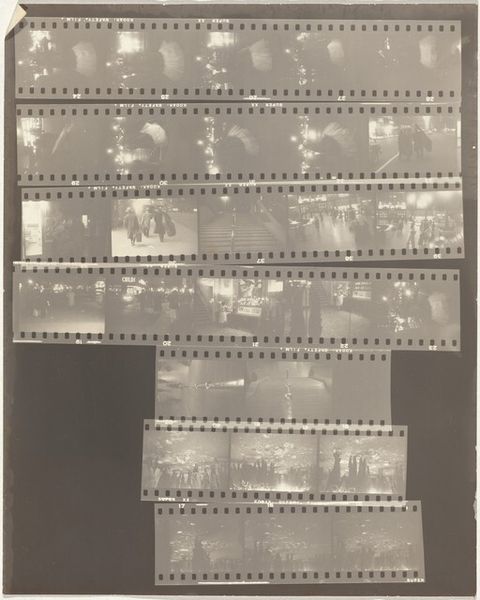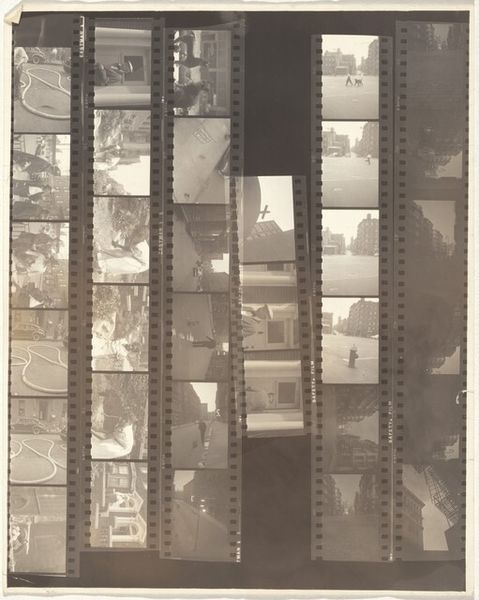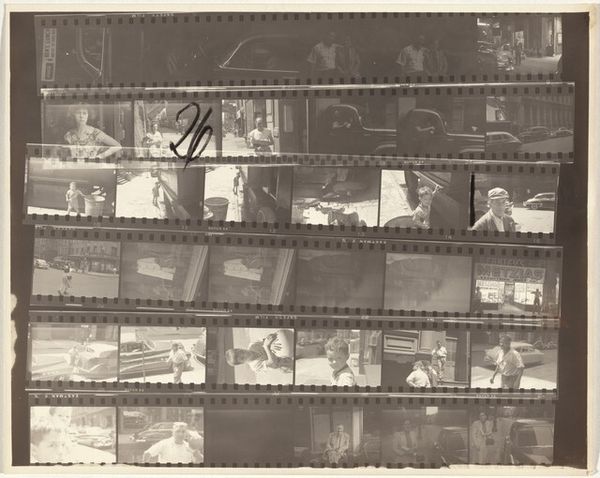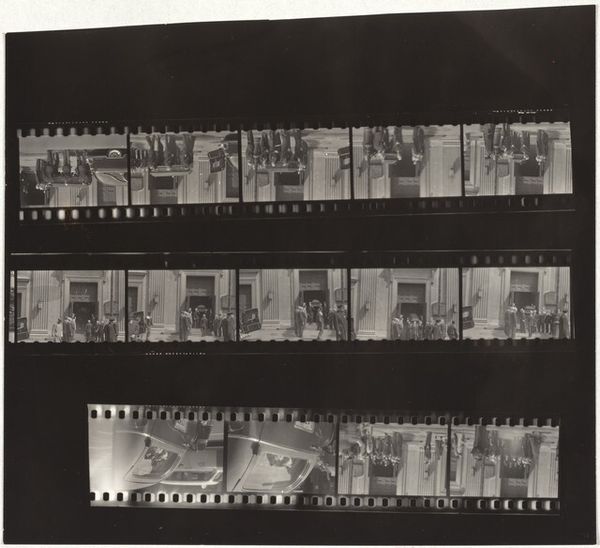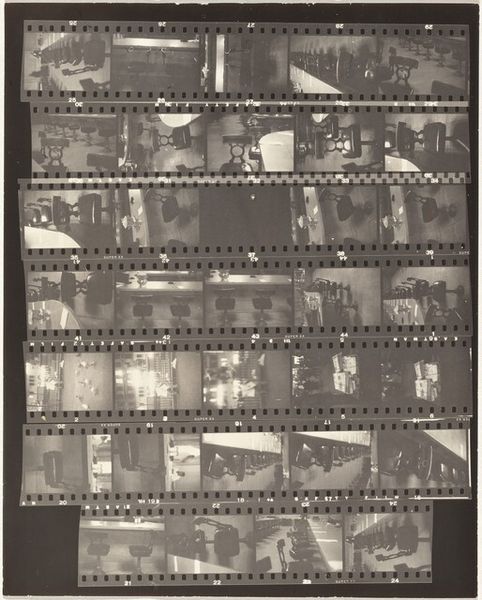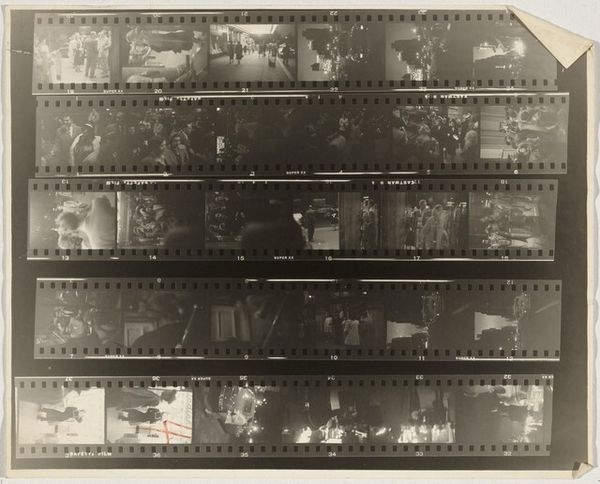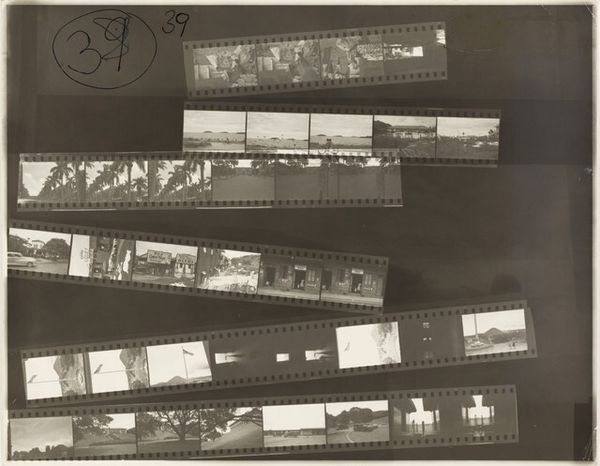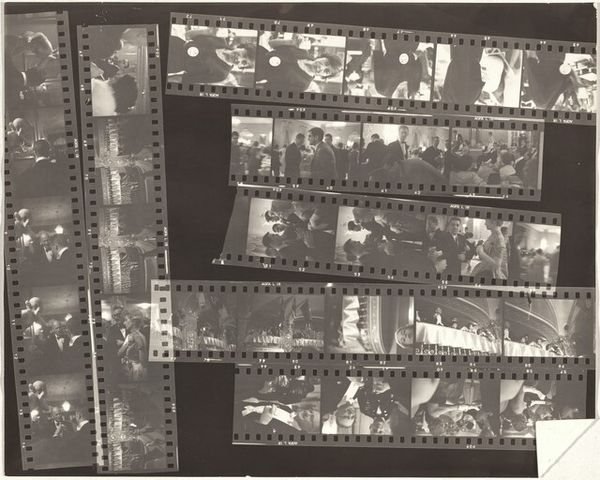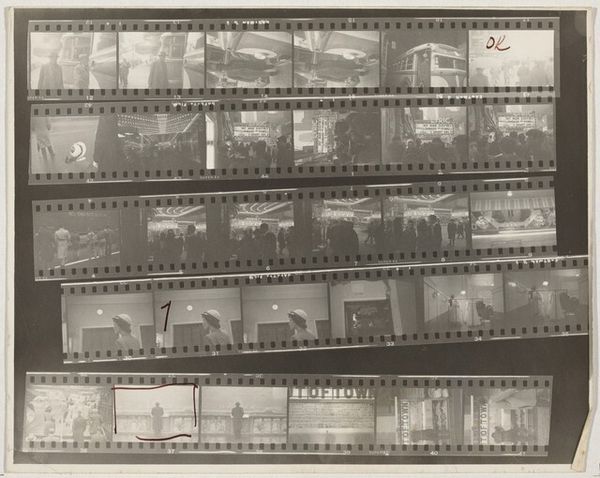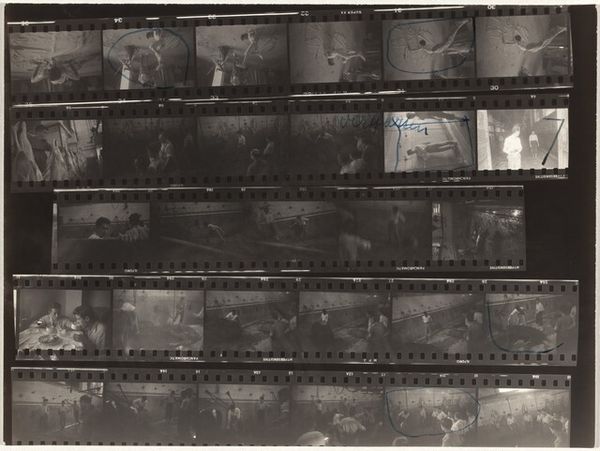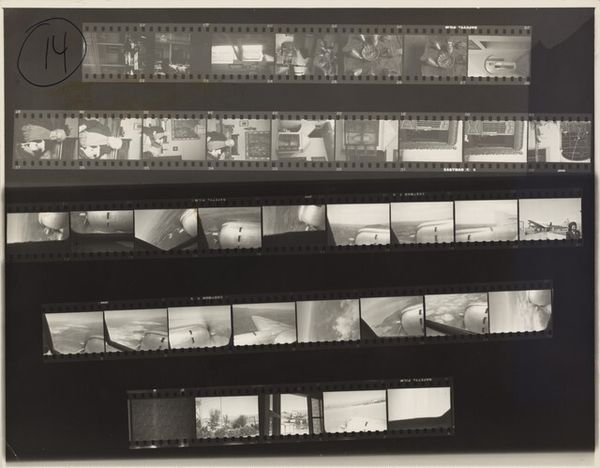
Dimensions: overall: 25.3 x 20.3 cm (9 15/16 x 8 in.)
Copyright: National Gallery of Art: CC0 1.0
Curator: Well, hello there! Today we're looking at Robert Frank’s “Early New York City 7,” a photomontage from 1955. It’s a black and white work, comprised of several strips of film laid out next to each other. My immediate thought is organized chaos. What jumps out at you? Editor: Utter fragmentation. My eye darts all over. The symbolism here feels broken, disparate images vying for attention. It reflects, perhaps, the accelerated, almost violently disconnected feeling of urban existence. Curator: That’s a great observation. The New York School certainly embraced that tension. I see visual echoes of urban life here – repeated frames, billboards, anonymous faces blurred by motion – all capturing the frenetic energy of mid-century New York. Think of the post-war boom and advertising’s rise during this period. Editor: Absolutely, the repetition acts almost as a mantra—or rather, a hyper-stimulation indicative of capitalist realism. It feels emotionally charged. I'm particularly drawn to how figures repeat alongside snippets of text on advertising boards, lending that feeling of a life led almost as a backdrop, secondary to other goals. Curator: Interesting, and I appreciate how you're connecting those themes. When the photograph was created, such "fragmented realism" certainly stood apart from dominant photography aesthetics of the time. What are your feelings about that as a historian of visual cultures? Editor: I find it brave. Consider the social and artistic movements percolating in the 50s — an awareness of the anxieties of everyday life combined with movements against establishment. Robert Frank pushes this forward by breaking with expected structures in representing an already rapidly changing world. Curator: Frank often challenges the viewers with discomfort. Think of the film reel—a physical, tangible symbol. Editor: Yes, an insistence on acknowledging medium over subject. It brings us back from emotional reading of his social landscapes, reminding us, ironically, of his artistic intention. Curator: It's a brave representation. Something like urban planning and society’s construction as it really happened. I wonder, do the messages of works like this stand differently in present times? Editor: Indubitably, there is an echo, and it is louder. Consider present society where individual agency is so challenged; works like these may well find far stronger emotional response. What about yourself as an Iconographer, can you tell whether Frank’s works inspire younger visual artists? Curator: Definitely! Today, more artists explore similar techniques to portray information overload and the transience of modern experience. Editor: Perhaps that confirms the work's enduring social importance. Curator: It seems it does.
Comments
No comments
Be the first to comment and join the conversation on the ultimate creative platform.
